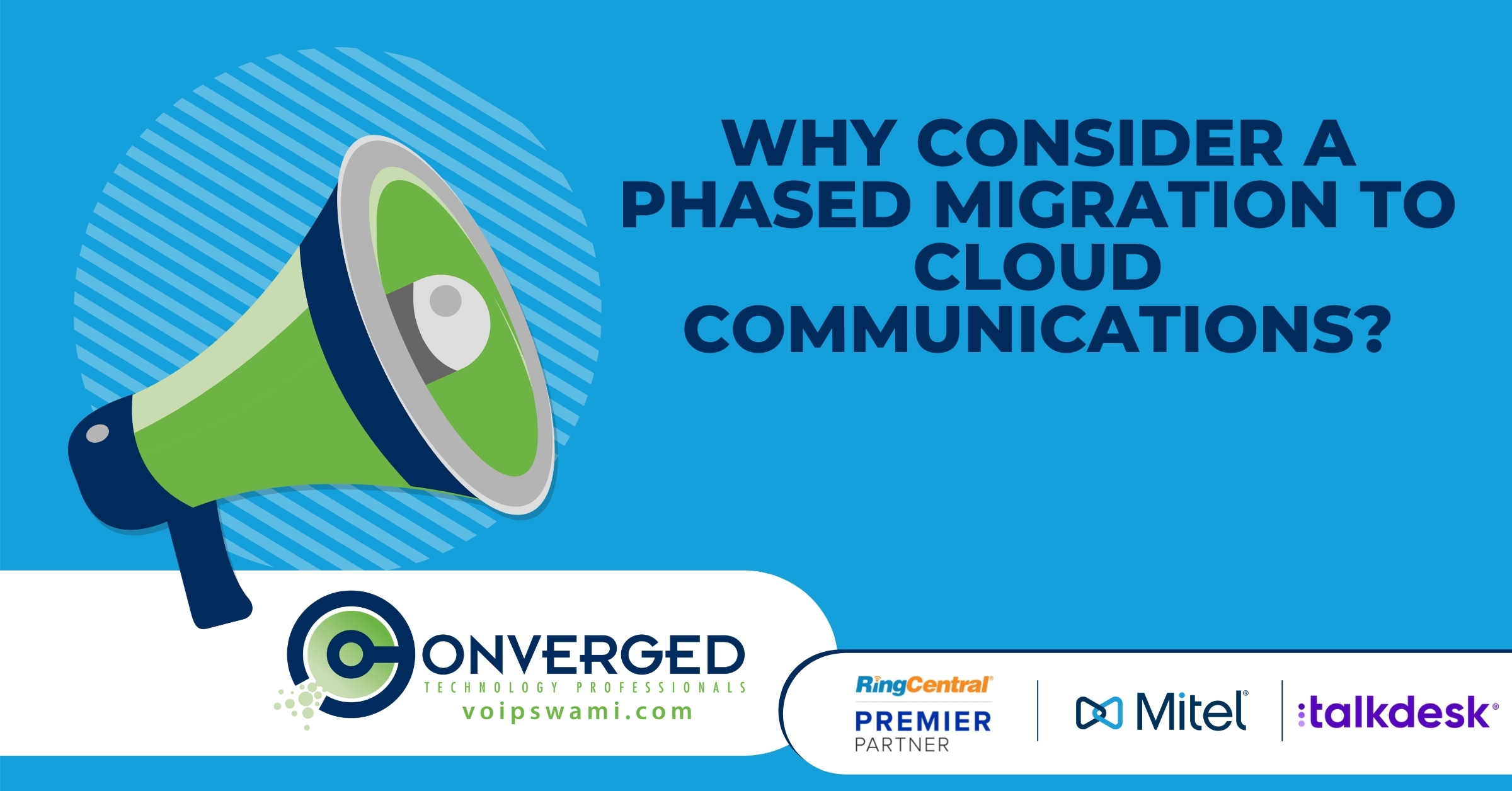
As more businesses switch to cloud communications each year, you may find it harder and harder to ignore the various benefits involved with making the migration. The right cloud PBX solution helps you streamline operations, simplify IT management and integrations, plus significantly lower costs over time.
What you may not realize is that moving to the cloud from an on-prem PBX system isn’t an overnight process, especially if your company is large or has a highly complex IT infrastructure in place. In cases like these, it might be best to conduct your migration in stages.
Read on to learn why phased migration might be a good idea for your business and suggested strategies for implementation.
Why Phased Migration to the Cloud Could be the Best Option
It may feel tempting to try moving your entire organization to the cloud at once, but migration is a massive undertaking for an enterprise-level company. You need to move thousands of employees into the new platform, train everyone on the new system, incorporate professional services, migrate data, set up new security protocols, test and monitor performance, etc. The list adds up and can quickly become overwhelming.
Business communication is one of the core engines that keep operations moving. If you force a transition too quickly, you run the risk of business disruption. A much safer approach is to plan your migration carefully and choose a strategy to introduce it in stages that works for your organization.

Tips for Breaking Up Your Migration Phases
Planning Stage: No matter what cloud UC implementation strategy you adopt, there is extensive planning involved around hardware, internet connectivity, features, integrations and dozens of other topics to make the system work for every department within your organization. A cloud migration plan is critical.
Helpful Hint: It’s a good idea to hire a team of professionals who have demonstrated expertise in the IT and cloud communications field to help guide you through the process.
Start Slow: Maybe you’ve heard BBQ pit masters use the term “low and slow” for cooking their meats. As funny as it sounds, this approach is also the secret to successful cloud migration: Take a low-risk, calculated pace for optimal results. This means starting small, thoroughly testing each step and add features/locations at a pace that makes sense for company adoption.
Stages by Teams and Departments: If you are an enterprise-level business migrating to the cloud, it may make sense to introduce a new UCaaS platform by limiting the number of new users per phase. You could begin the transition by phasing in specific departments first, like your IT, sales or customer service teams. In other situations, it may make sense to focus on satellite offices or key service center locations.
General Tips For Migrating to UCaaS or CCaaS
It’s important to remember that hybrid communications is not a new trend in the world of UCaaS. There are many large and enterprise businesses who still use on-premise phone systems with a cloud contact center, so it is definitely not essential to migrate everything at once...even though some providers may suggest otherwise. Do what makes sense for your business from an efficiency, production and cost perspective.
If you are moving to a cloud communications provider or considering a move in the near future, you don’t have to take that journey alone. Our team of consultants and IT professionals can help you achieve optimal performance and ROI.
At Converged Technology Professionals, we have years of experience in IT and cloud migration, so we will serve you as a trusted partner as you make the transition. To find out how we can help you achieve your critical business objectives, contact us today.
If you enjoyed this article you may also enjoy:
